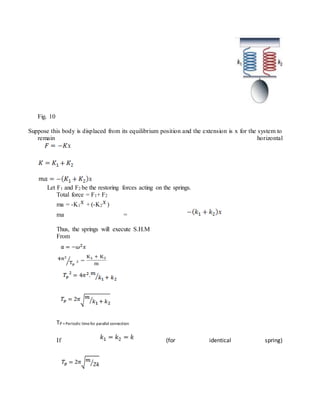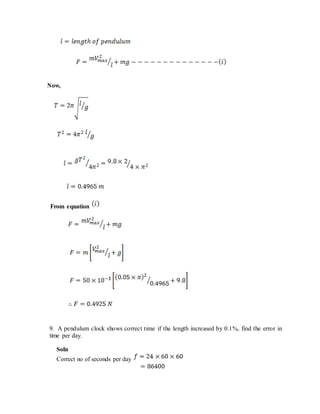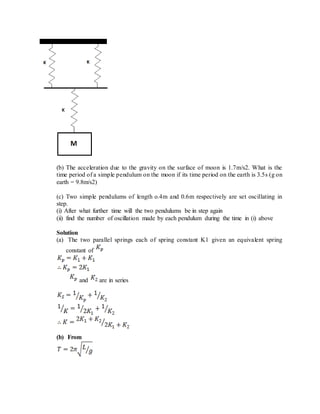The document discusses simple harmonic motion and related concepts. It defines periodic and oscillatory motion, with examples including a pendulum, mass on a spring, and musical instrument strings. Simple harmonic motion is motion where the restoring force is directly proportional to displacement and acts to restore the body to equilibrium. For an object to oscillate, it must have inertia, a restoring force, and minimal friction. Examples given are a pendulum, mass on a spring, and floating cylinder. The velocity and acceleration of a body in simple harmonic motion are directly proportional to displacement from equilibrium and act to restore the body.
























































































